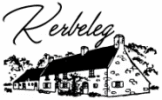This website uses cookies so that we can provide you with the best user experience possible. Cookie information is stored in your browser and performs functions such as recognising you when you return to our website and helping our team to understand which sections of the website you find most interesting and useful.
A necessary stage in our renovations, a first level of renovation through the walls opens its creative doors to us. Renovating with lime will allow the stone to breathe again.
Until recent decades, all restored houses were ‘insulated’ with cement, either partially by grouting the exposed stones, or completely by covering the walls. This absurd, inexpensive and all-too-common technique used the water-repellent properties of cement to prevent water from entering the house. Temporarily at any rate. Saltpetre is the first manifestation of a chemical reaction in cement, appearing in the form of potassium nitrate efflorescences that crystallise in contact with the air, giving rise to fungi, mould and allergenic bacteria if supports are applied to it. Masking the problem not only doesn’t solve it, it actually creates new ones. As the dampness in the floors rises up the walls by capillary action until it finds an exit, the destructive patches of saltpetre can reach all the way up to the upper floors and literally reduce the cement walls to dust (which made our job a little easier). Here are a few discoveries hidden by wallpaper, panelling and cement joints. The entire north side of the house is affected by this plague.
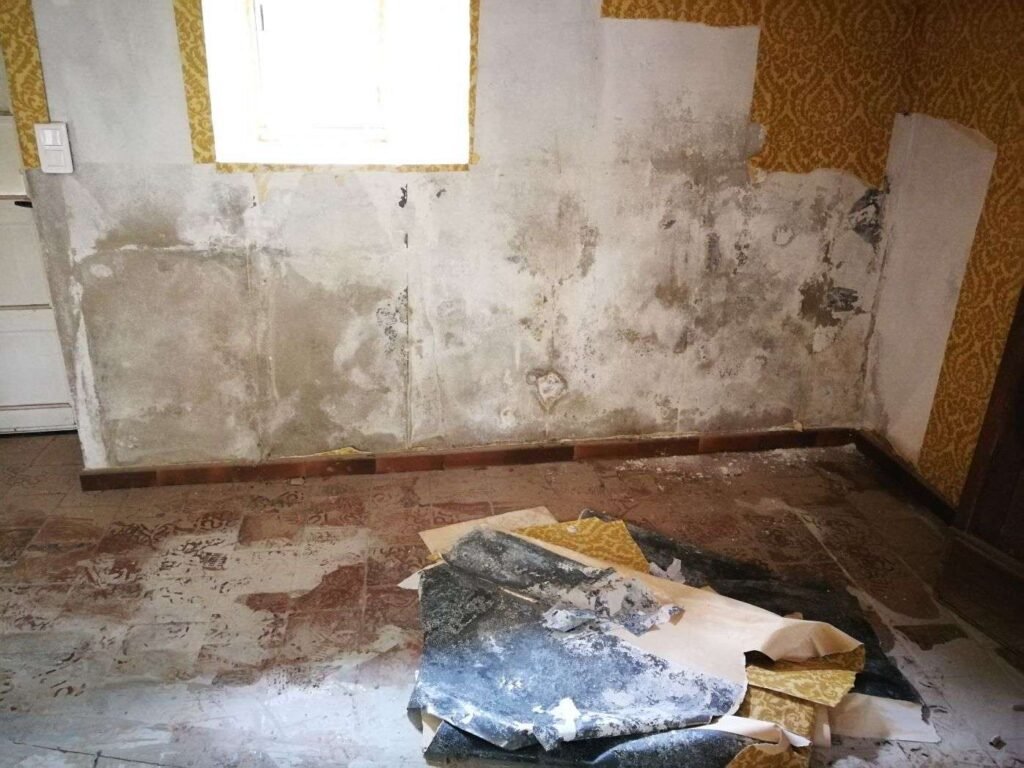
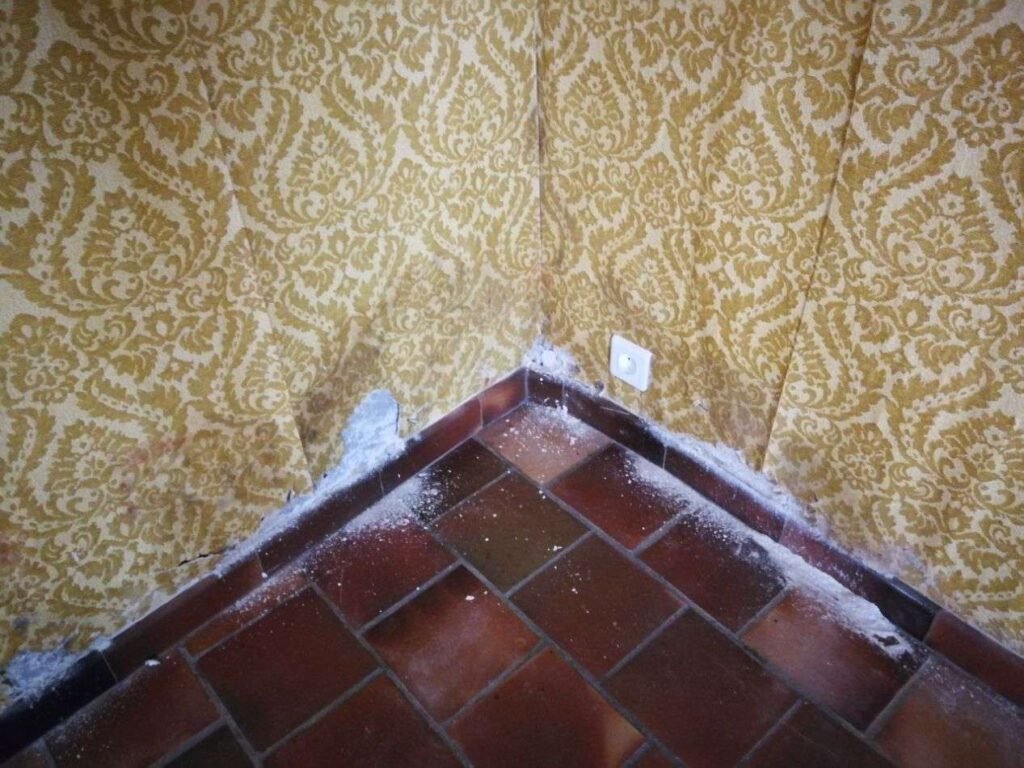
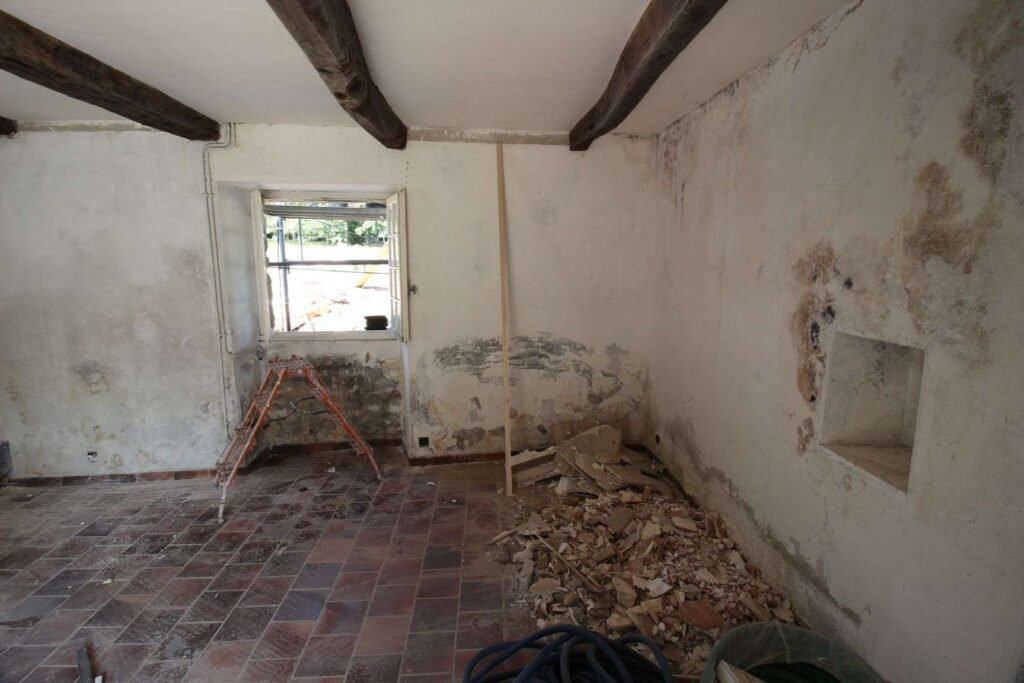

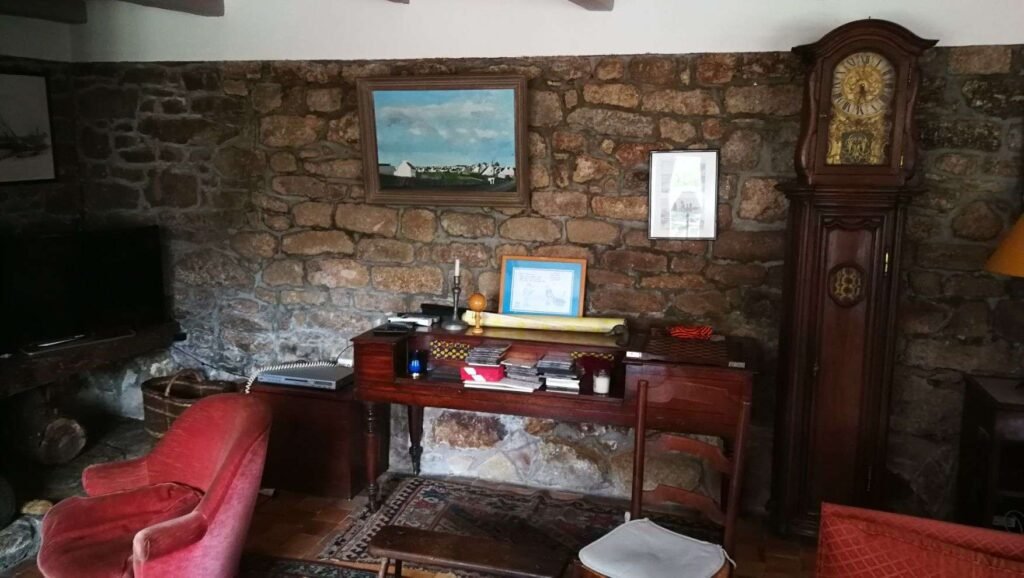
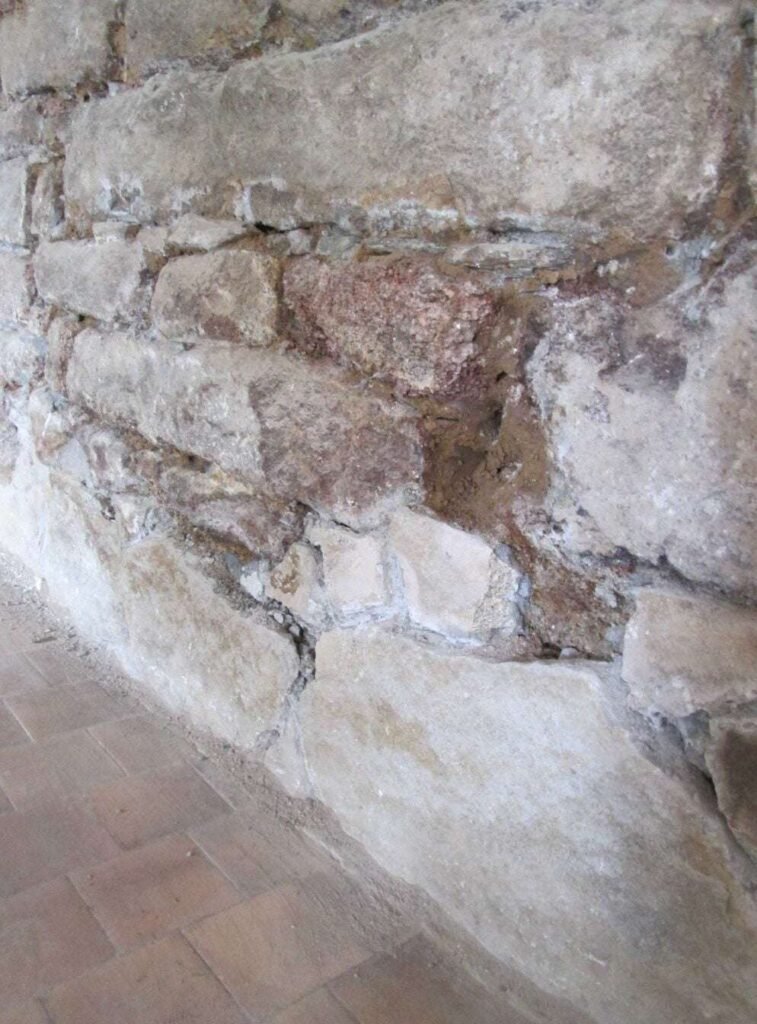
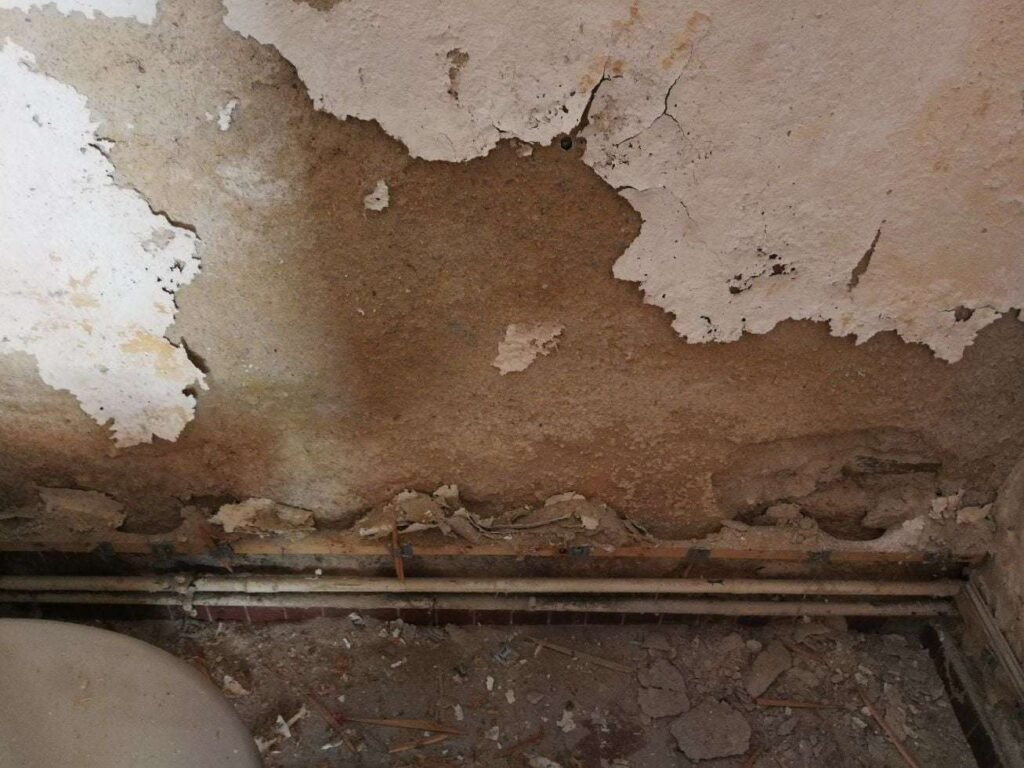
But we have to go back to the source of the problem. Since most of the water was seeping through the slope to the north of the house, we thought about digging a sanitary trench, but the granite soil wouldn’t allow it.
So we’re repairing the pavements and outside walls that have been damaged by roots, rainwater run-off and the weather. The first step was to remove the invasive rooted plants, then strip the pavement, redo the gutter and create a full-length joint at the foot of the north-facing wall.
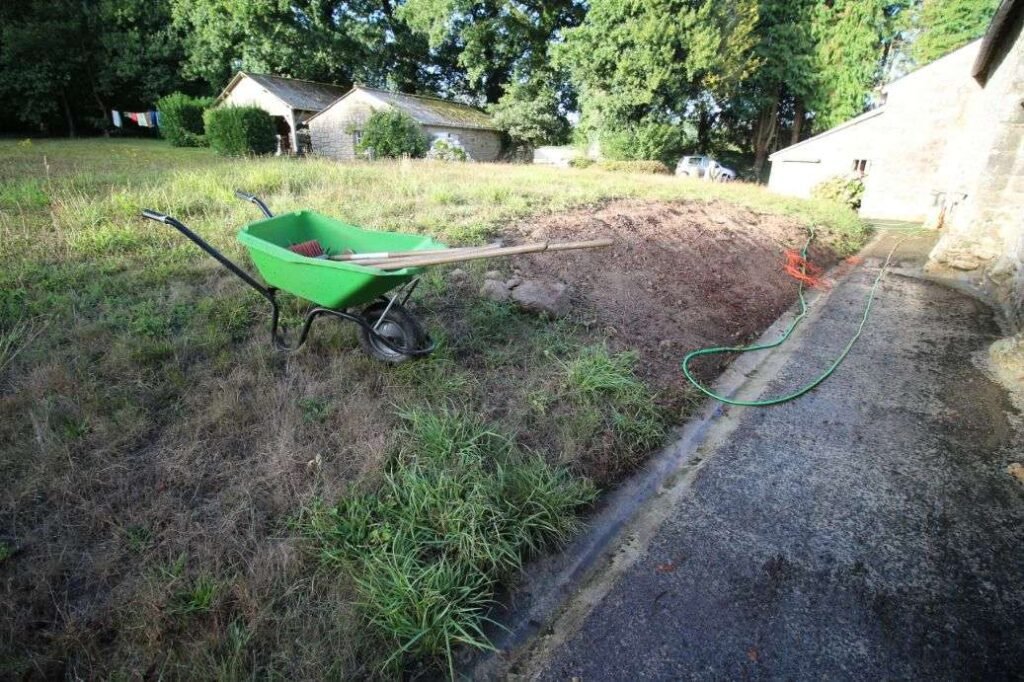
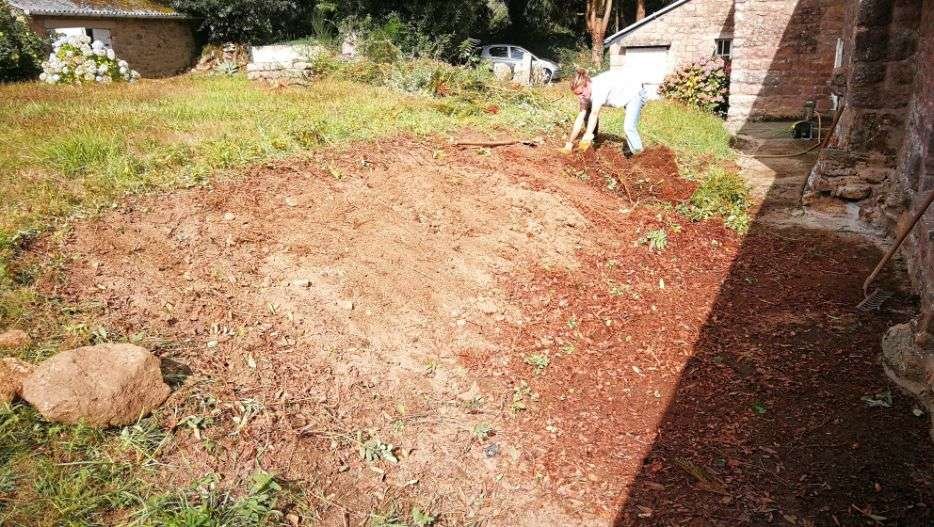







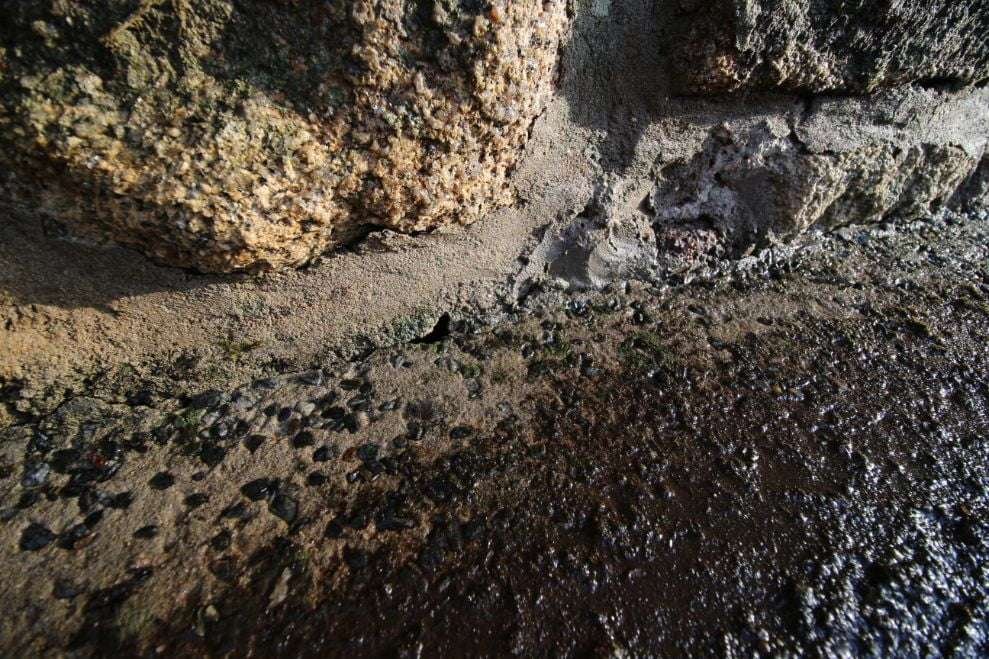
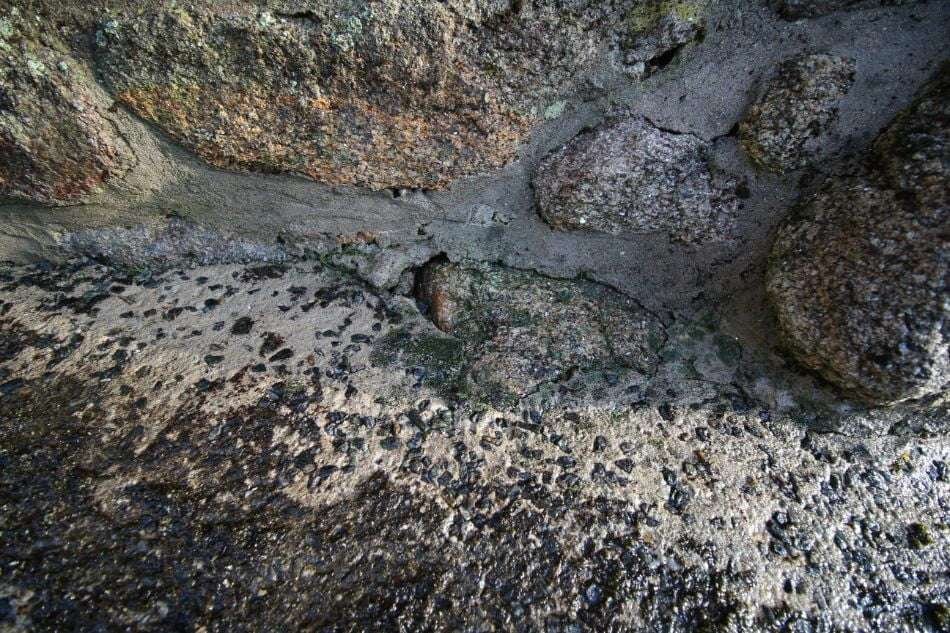


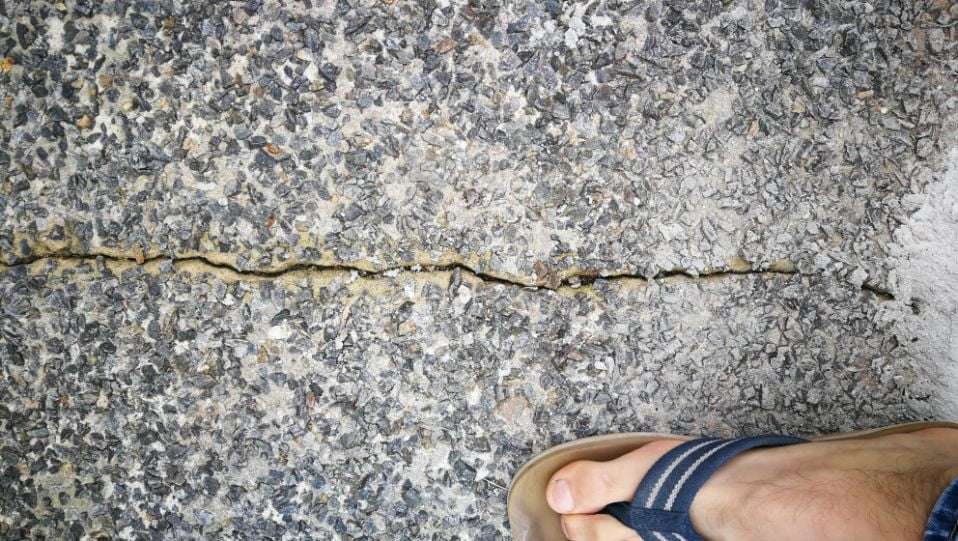

Once they had been disjointed and sanded, the interior walls were consolidated using a lime-based cement that allows excess moisture to evaporate from the wall, avoiding the condensation effects of the old cement that chilled the rooms. To make matters worse, the result is luminous.


